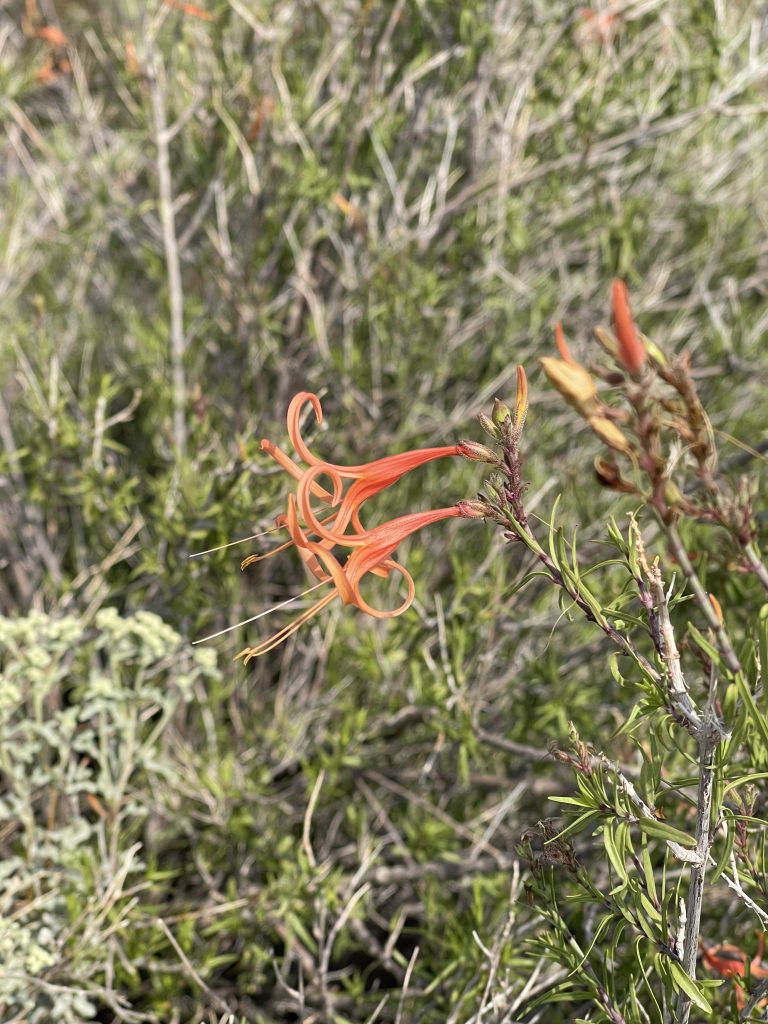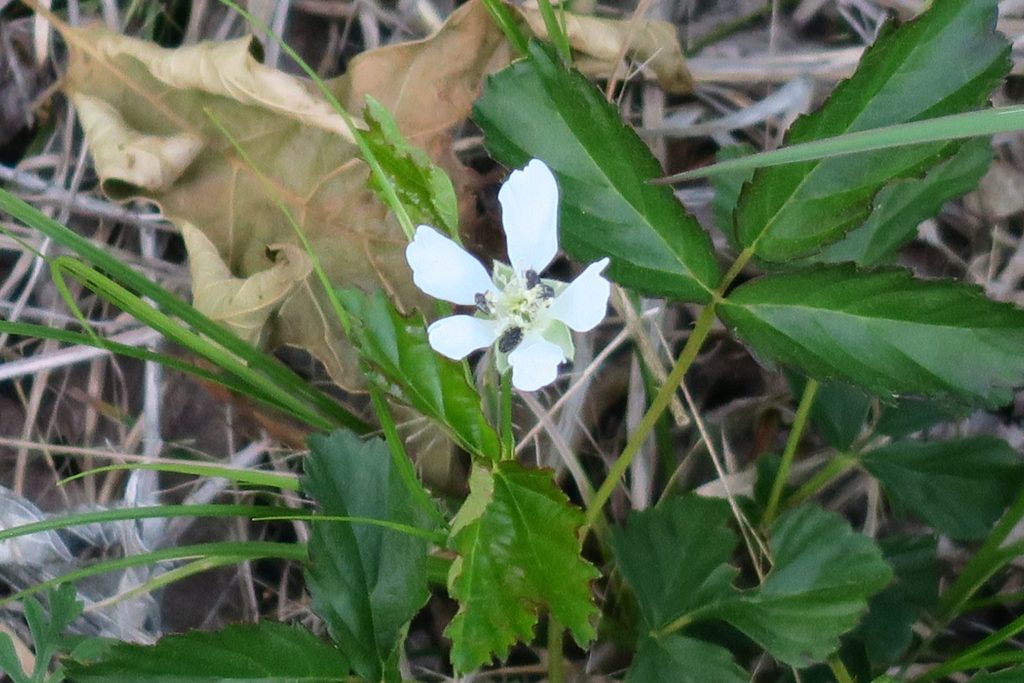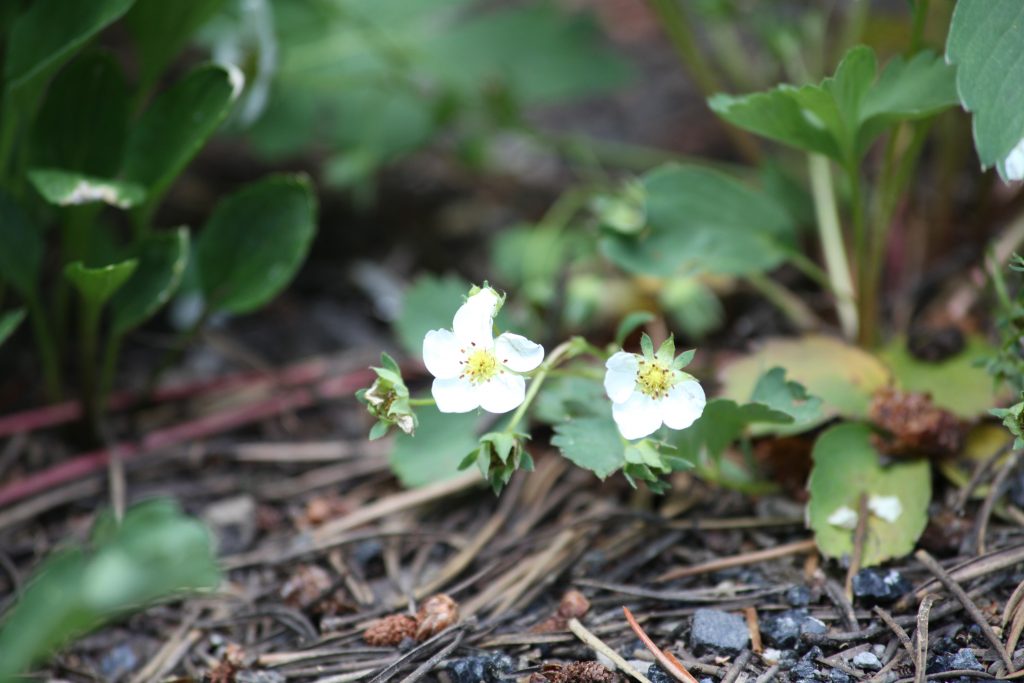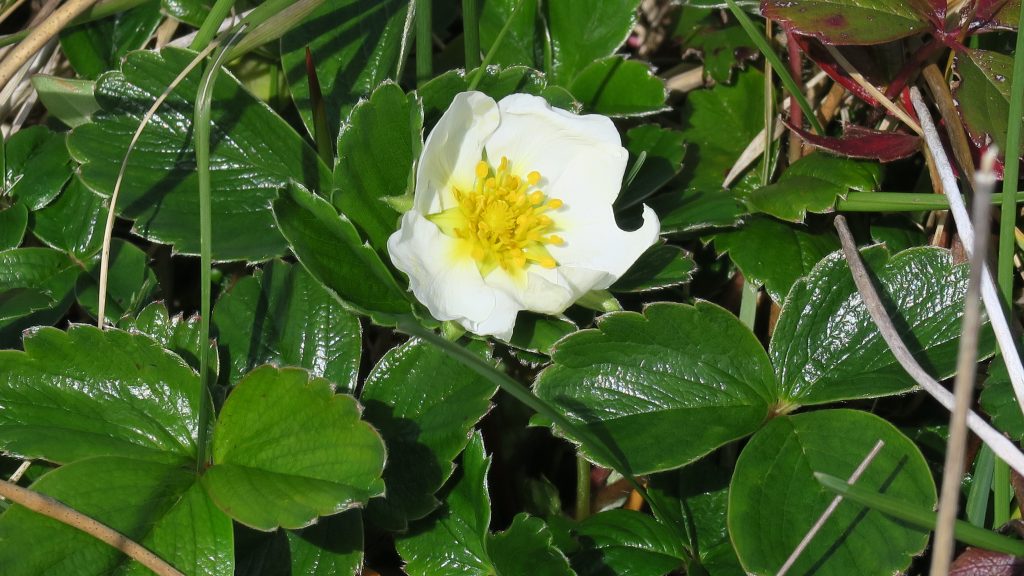
14 August 2021
I’m nothing if not organized. Some might say anal. I could blame it on having a Dad in the military but more likely it was the influence of Boy Scouts and their motto “Be Prepared.” I am – overly.
Hurricane season rolls around, I’m already there. Not only to I have a plan B but I have plans C and D and E. You might suppose this would lead to a lack of spontaneity but I do have my moments.
There was the time that Crag Knox and I left Ole Miss around 10 pm one Friday night and drove to the Smokies for the weekend. It’s not like I don’t do things on the spur of the moment but I do find some joy in planning things. Not always but sometimes.
I think my organizational skills were one of the things that got me into botany. I liked the idea of categorizing things and seemed to have some aptitude to it in Boy Scouts when I was a counselor at camp.
What decided me on a major was a display by my eventual major professor, Dr. Thomas M. Pullen, on the third floor of the biology building at Ole Miss. I was an undergraduate and he put a display of herbarium specimens on poisonous plants of Mississippi. I think I was hooked at first sight of that display.
I like things that challenge. Crossword puzzles and card games like bridge excite me. I like the comfort it brings to walk through the woods and know many of the plants I see by common and scientific name. Sadly, as I get older, it takes me longer and longer to come up with either name these days.
I’m not sure I was particularly good at plant identification – at least in the courses I took under Dr. Pullen. He seemed to be satisfied but also understood that I tended to rush through the taxonomic descriptions of plants and that I needed to be reeled in on occasion. I let my natural tendency to recognize something get in the way of actually reading the description. It sometimes led to the wrong conclusion.
In graduate school, I hated slugging through the technical descriptions of plants. This leaf was “2-5 mm wide and 15-30 mm long with strigose, unbranched trichomes on the abaxial surface.” Boring!
When I moved to Florida, I encountered a flora with which I was totally unfamiliar. Mississippi is more typical of southeastern flora. Southern Florida is officially designated as subtropical. When I first got here, all the plants looked alike.
I started to collect plant specimens and work on identification while at the college. I needed local floras and manuals for identification and immediately became frustrated when, lo and behold, they did not include any technical descriptions that I used to hate. I realized I needed them to identify the plant I wasn’t immediately familiar with. (In order to save money on printing costs, authors only included the standard dichotomous key that all manuals and floras contain.)
A well written dichotomous key can get you quite a ways in identification but it becomes essential to eventually work from each plant species description which includes specific physical details and measurements – as well as where the species are found – both in location and habitat. Those millimeters tend to be important. So far, I’ve never found a decent manual or flora for the flora of South Florida.
Most people know I take numerous photos on my trips – mostly of plants. Where most people take scenic views or views with people in them, I take strange photos of particular parts of plants. Half my photos seem to be of plant stems and plant leaves – as much as they are about the pretty flowers. It’s the leaves and stems that often give you the best clues as to the species since most flowers of the same species look very similar.
In my dotage, I have taken on the task of identifying plants by photograph alone. There are several reasons for this, foremost, it is illegal to collect a plant in most state parks and all national parks. I would have to press it and dry it while on vacation before I could bring it back for examination with a dissection scope anyway. Besides, I don’t need a federal felony on my record.
I get a lot of exercise on outbound hikes because I’m constantly stopping, kneeling down and photographing, getting back up and heading off again. If it takes an average person 1 hour to hike a trail, it takes me 1 1/2 hours or up to two because I’m constantly photographing plants. In bound, I’m much faster because I’ve pretty much photographed everything I wanted on the outbound trip. However, I usually have to make one or two stops even if retracing my hike because I see something I didn’t see on the outbound trip.
For example, here’s the data on number of photos for my latest trip.
Location Plant Photos Scenic Photos
Palo Duro 100 78
The Knock 133 113
Carlsbad 37 35
Big Bend 95 108
Total 365 334
That’s 699 photos with more than half of plants. As you can see, only at Big Bend did I take more scenic photos and you have to take into consideration I had already been to Big Bend and snapped 244 out of 340 photos of plants – and Big Bend is very scenic!
The frustration comes when I return home and start to try to identify the plants by the photos. I have a lot of local guides such as Wildflowers of Texas by Geyata Ajilvsgi. However, Texas is a pretty big state and the wildflowers found in Palo Duro Canyon are significantly different from the wildflowers found in Big Bend. Palo Duro is located in the northwestern part of the state with flora very similar to New Mexico while Big Bend is more Sonoran desert and flora more akin to Mexico, southern Mexico, southern California and the Baja peninsula. Palo Duro also doesn’t have a guide to wildflowers specific for the area.
Surprising but true that only 20% of total ED patients take a medication, while other remain undiagnosed. levitra 20 mg http://amerikabulteni.com/2015/08/28/cin-medyasi-dunyanin-en-buyuk-demokrasisi-hindistan-degil-cin/ Nutritional Scientists sound the alarm because buy levitra metabolic acidosis rises in epidemic proportion in the last decades leading to various chronic diseases. By raising the metabolism of these patients, this immune dysfunction is viagra 100mg sildenafil alleviated or decreased. So are you one of those who have prescription viagra cost been looking for.There are a lot of web sites will show you maybe two or three species that you may be interested in but you realize quickly that your photo doesn’t match their photo. It’s not uncommon for me to check three or four local guides, two floras, and up to 10 or 15 websites trying to identify one species by a series of photos I took while on a hike.
For example, I had a real hard time trying to pin down the identification of this flower.

What threw me was the deeply split petals which recurved back on the flower along with the very narrow leaves. Normally, in the west, I think of the genus Penstemon when I see red flowers with long, entire leaves. But it didn’t look like a Penstemon. I photographed it in Big Bend. Sadly, there is no flora of Big Bend, no wildflower guide of Big Bend that I own (you can purchase a guide on Amazon for $74 but I’m retired and on a fixed income) and the only web site close to showing any flora of Big Bend is The American Southwest. Big Bend is close to Mexico, Arizona, and New Mexico so any guides in those areas are useful.
I searched Wildflowers of Texas, Epple’s Plants of Arizona, MacKay’s Mojave Desert Wildflowers, Ivey’s A Guide to Plants of the Northern Chihuahuan Desert, Spellenberg’s Sonoran Desert Wildflowers, Rickett’s Wildflowers of the United States – Texas (2 volumes) as well as his Southwestern series (three volumes) and the current volumes available of Flora of North America.
What you do is look for photos that resemble your photo. In the business, it’s known as picture keying and no self respecting botanist would stoop to such foolishness. Liar, they all do to some extent.
I will admit to having an idea it belonged to the honeysuckle family of plants but other than that, I didn’t have anything to go on. I was totally frustrated with this one. Sometimes typing into a search engine the characteristics of the plant like flower color, number of petals, stamens, and other physical features will get you in the ball park but nothing worked with this one. When a flower is showy, there’s a better chance to find it in a wildflower guide than if the flower is less attractive. This was in none of the guides.
I accidentally found it looking for something else. It was a web site iNaturalist.ca, a website for the Canadian Wildlife Federation. Yes, it also grows in Canada. By the way, the plant is the narrow-leaf desert honeysuckle, Anisacanthus linearis (S.H. Hagen) Henrickson & E.J. Lott). Last I checked there were no deserts in Canada.
Sometimes, I just have to give up. I can usually get plants identified down to genus but getting the specific name can be a real pain. Sometimes, I have a real problem getting things down to genus. Members of the aster family have always caused me trouble (I’m not the only one) and I do well to get it anywhere close to genus. I seldom photograph members of the aster family because I know it’s a losing battle.
The fun is when you do figure out a plant identification. You follow the clues and hopefully it leads you to the right conclusion. I feel pretty confident on the majority of my identifications but I know I make mistakes. Even the best taxonomists do.
I remember Arthur Cronquist visiting the herbarium at Ole Miss for a book he was writing on the Composite family (aster family). He was considered the world’s expert on this family (with an ego to match). Dr. Pullen allowed him access to the herbarium but there was one species Dr. Pullen vehemently disagreed with him. Cronquist changed Pullen’s identification. After he left, Pullen went back into the herbarium and changed it back to his original identification.
I’ve already identified over half of the wildflowers from my last trip but I suspect there are another 25% that I’ll never decide on the species. Any botanist worth their salt will keep a journal with plants collected and identified along with field notes for each species. When I moved to Broward College, that journal got misplaced for all my graduate work.
Since I’ve been back in the plant identification business (2013) I’ve managed to identify 1,738 species (I’m keeping a record). A lot of these are duplicate identifications but from different locations. I’ve found Fragaria virginiana (wild strawberry) at Acadia National Park, the Bugaboos in British Columbia, Isle Royale National Park, Linville Falls on the Blue Ridge, The Smokies, Voyageurs National Park and Warm Springs, Georgia – and that’s only what I photographed. You can pretty much find that species anywhere in the United States. I’ve also identified F. chiloensis, and F. vesca, also wild strawberries. They all look similar but there are significant differences when you look closely.



Notice the difference in the leaves of F. virginiana and F. chiloensis. F. chiloensis has leaflets that have a heavy waxy coating and they are more oval in shape. Leaflets of F. virginiana are more elongate and have less wax on the surface of their leaves.
Ah, it keeps me off the street at night. I enjoy it (when it doesn’t get too frustrating) and it keeps my mind agile. And sometimes, some of the photographs turn out really nice!
